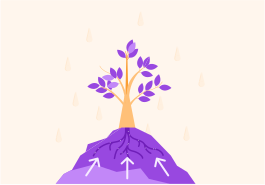YOU ARE LEARNING:
Phloem

Phloem
Phloem transport food generated in the leaves to the rest of the plant for use or storage.
Name the sugar produced by the plant during photosynthesis.

Name the organ where most of the photosynthesis occurs in the plant.

The glucose is transported from the leaves to the rest of the plant in the form of sucrose that has been **** dissolved in water with other nutrients. This is often referred to as sap. What are the main reasons that cells all around the plant require glucose?

You can select multiple answers
The image shows the vessel that transports the dissolved sucrose. Name the vessel.


Which option correctly describes the movement of substances in the phloem?
A) Up only B) Down only C) Up and down


The phloem is a transport vessel in the plant's stem. It transports dissolved food substances up and down the plant. You can remember this by "phloem" beginning with the same "f"-sound as "food". Glucose and other nutrients are required by all plant cells for respiration and growth.
The phloem are made of elongated cells. They are a little longer than other cells. How does the structure of the phloem allow substances to flow?
A) There are pores in the end walls. B) There are no end walls at all.


The movement of dissolved food substances up and down the plant is known as translocation (meaning "moving location"). The transport occurs up and down the phloem. The elongated cells with pores in the end walls make the phloem good at this job.
Plants may use the glucose straight away, for example in respiration. What will the plant do if the glucose is not required straight away?

